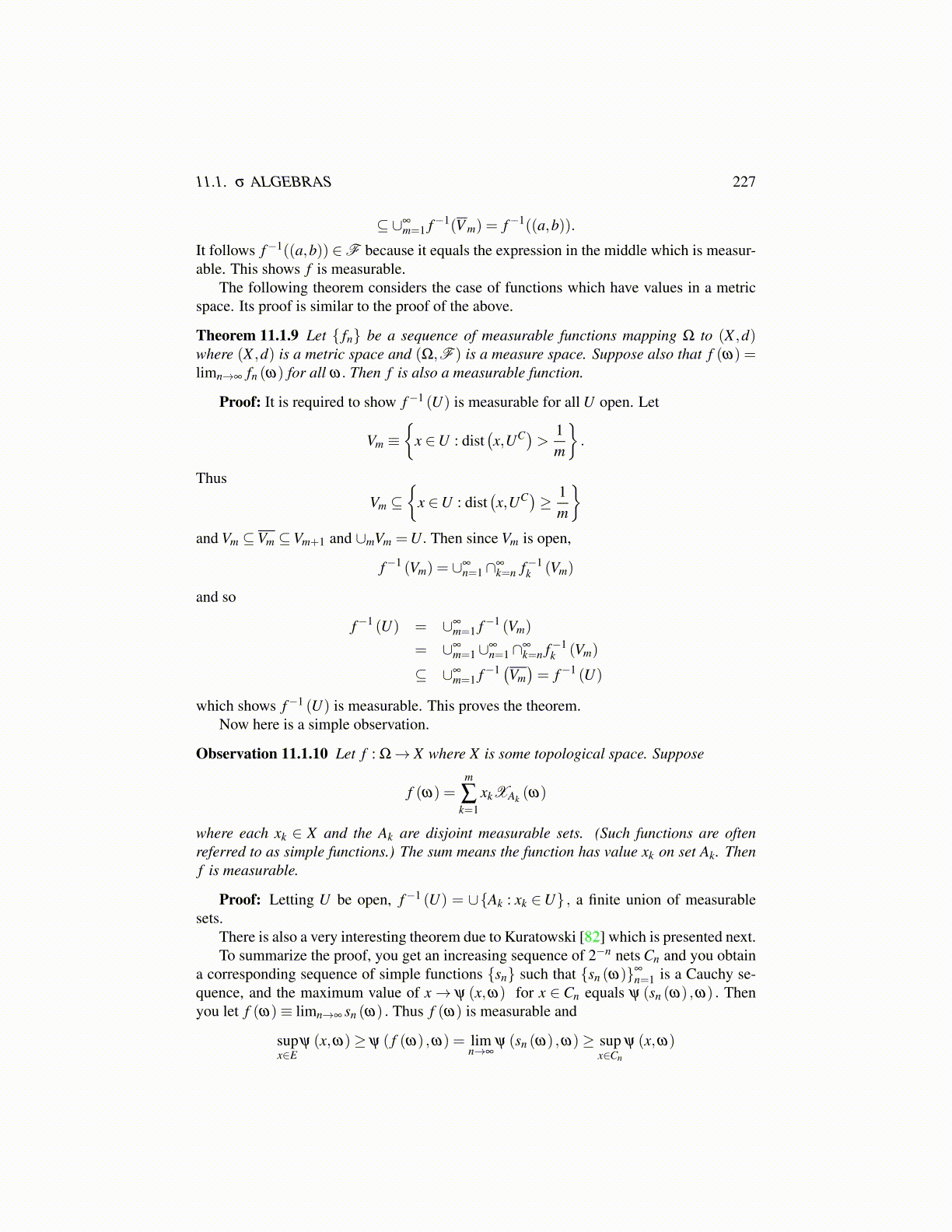
11.1. σ ALGEBRAS 227
⊆ ∪∞m=1 f−1(V m) = f−1((a,b)).
It follows f−1((a,b)) ∈F because it equals the expression in the middle which is measur-able. This shows f is measurable.
The following theorem considers the case of functions which have values in a metricspace. Its proof is similar to the proof of the above.
Theorem 11.1.9 Let { fn} be a sequence of measurable functions mapping Ω to (X ,d)where (X ,d) is a metric space and (Ω,F ) is a measure space. Suppose also that f (ω) =limn→∞ fn (ω) for all ω. Then f is also a measurable function.
Proof: It is required to show f−1 (U) is measurable for all U open. Let
Vm ≡{
x ∈U : dist(x,UC)> 1
m
}.
Thus
Vm ⊆{
x ∈U : dist(x,UC)≥ 1
m
}and Vm ⊆Vm ⊆Vm+1 and ∪mVm =U. Then since Vm is open,
f−1 (Vm) = ∪∞n=1∩∞
k=n f−1k (Vm)
and so
f−1 (U) = ∪∞m=1 f−1 (Vm)
= ∪∞m=1∪∞
n=1∩∞k=n f−1
k (Vm)
⊆ ∪∞m=1 f−1 (Vm
)= f−1 (U)
which shows f−1 (U) is measurable. This proves the theorem.Now here is a simple observation.
Observation 11.1.10 Let f : Ω→ X where X is some topological space. Suppose
f (ω) =m
∑k=1
xkXAk (ω)
where each xk ∈ X and the Ak are disjoint measurable sets. (Such functions are oftenreferred to as simple functions.) The sum means the function has value xk on set Ak. Thenf is measurable.
Proof: Letting U be open, f−1 (U) = ∪{Ak : xk ∈U} , a finite union of measurablesets.
There is also a very interesting theorem due to Kuratowski [82] which is presented next.To summarize the proof, you get an increasing sequence of 2−n nets Cn and you obtain
a corresponding sequence of simple functions {sn} such that {sn (ω)}∞
n=1 is a Cauchy se-quence, and the maximum value of x→ ψ (x,ω) for x ∈ Cn equals ψ (sn (ω) ,ω) . Thenyou let f (ω)≡ limn→∞ sn (ω) . Thus f (ω) is measurable and
supx∈E
ψ (x,ω)≥ ψ ( f (ω) ,ω) = limn→∞
ψ (sn (ω) ,ω)≥ supx∈Cn
ψ (x,ω)